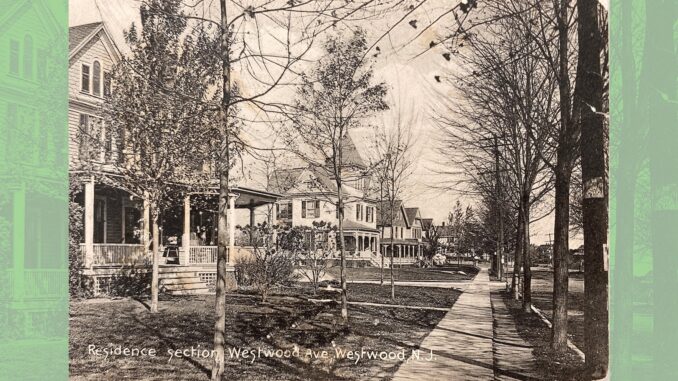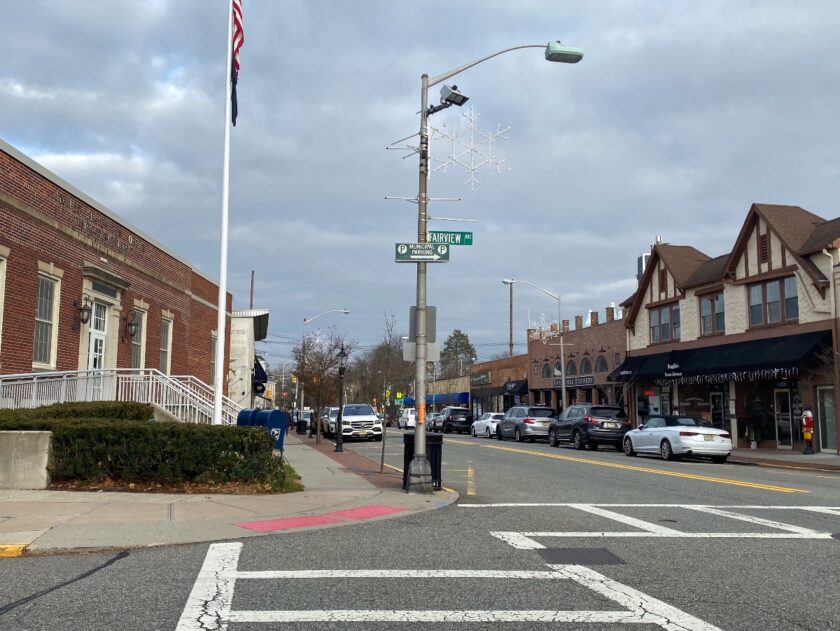
WESTWOOD—A large part of Westwood Avenue used to be lined with houses. The image above, from the early 1900s, probably was taken around this time of year — the trees are mostly bare. The perspective looks down Westwood Avenue toward Kinderkamack Road from just before Fairview Avenue. The same angle, as it looked a few days ago, is shown at right.
Retail arrived in Westwood in 1869, the same year as the railroad. The first store in town was the Van Emburgh and Bogert general store, which stood opposite the station on what is now the site of the four-story bank building at Westwood Avenue and Broadway.
At the time, Westwood had approximately 25 houses — but the coming of the railroad brought with it steady population growth. The commercial element gradually spread down the avenue, overtaking the residential until the later was gone.

The house in the foreground, built circa 1890, belonged to James Demarest. In 1924 it was moved around the corner to 286 Fairview. It housed the Westwood Library in the 1930s before becoming a Veterans of Foreign Wars post. In 2007 it was razed and a new building constructed in its place.
The second house, in the middle of the photo, belonged to T.E. Brickell. Built circa 1895, this gorgeous Victorian stood for just a few decades before it was torn down and the Westwood Post Office built in its spot in 1932. Brickell ran a meat and vegetable market on the commercial side of Westwood Avenue.
Brickell’s neighbor on the other side was Dr. Ralph S. Cone. Dr. Cone was among the town’s early physicians and practiced medicine from 1906 until his death, in 1932. He was beloved in the community; when he died, the flag in Veterans Memorial Park was lowered to half staff.
— Kristin Beuscher is president of the Pascack Historical Society.
